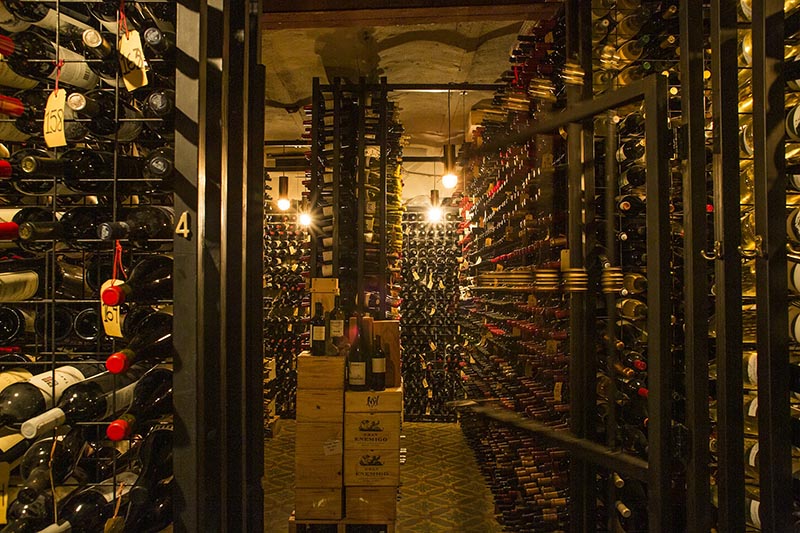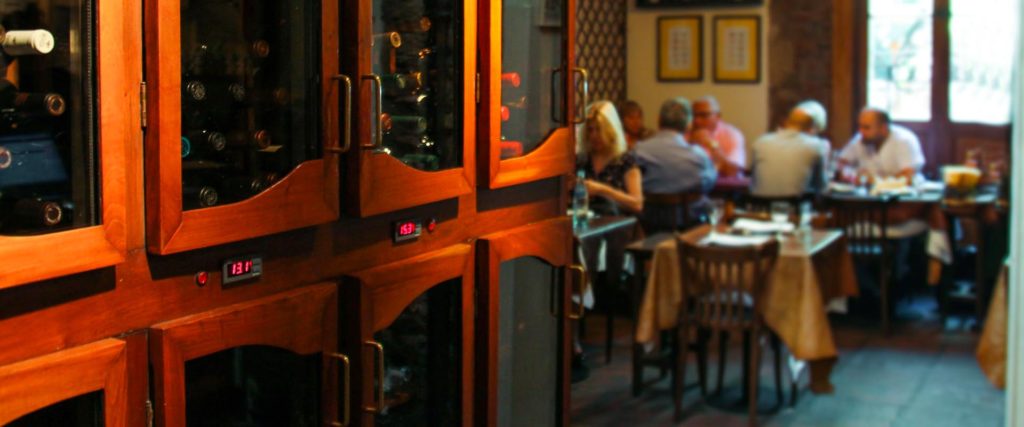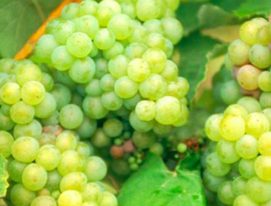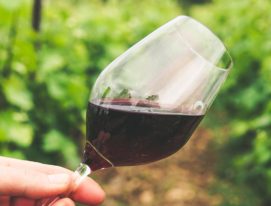Today we take a look at the cellar at Don Julio, a restaurant specializing in Argentine meat whose excellence has made it renowned across the world (it was named in 2020 as the best in Latin America and came 13th in The World’s 50 Best Restaurants, among other honors).
The cellar at Don Julio is unique: it doesn’t just reflect the extraordinary success of contemporary Argentine viticulture, it also features a number of historic icons of Argentine wine as well as many bottles carefully stored away to wow drinkers in the future.
“In addition to the meat, the other star of Argentine cuisine is wine. At Don Julio, the duo of meat and wine combines with other significant influences: seasonality, region, culture, indigenous heritage and immigration. They’re only a part of Argentine cuisine but meat and wine make for an excellent foundation,” says Pablo Rivero, the founder and owner of Don Julio Parrilla.
Since it first opened 23 years ago, Pablo and his family have always placed great emphasis on laying down wine. In time, talking to important wineries and collectors and classifying everything they could (while also investing for the future) they have built up a collection – one of the few in the country that can be accessed by the general public – that is now a significant cultural institution offering a history of the evolution of Argentine wine throughout its long history.

To get the full experience, you need to visit the cellar itself. It’s an enormous underground chamber containing 15,000 neatly organized bottles from across the country and the collection is constantly being renewed from a larger cellar elsewhere.
“This is a long-term project, we’re thinking thirty years minimum,” says Pablo. “Our love of wine was helped by the fact that the restaurant is well-located. Just a few blocks away you’ll find the headquarters of some of the most important wineries in Argentina: Esmeralda (which then became Catena Zapata); Giol, and Bodegas López, among others. A lot of the staff there just came for a meal and I don’t think you can run a parrilla without wine, so we worked on it from the very first day.”
The Cellar at Don Julio: the treasures
So which are the most precious gems kept in the cellar with such care? Pablo is stumped, he doesn’t know which to choose.
“The oldest wine we have is Merced del Tiempo, a wonder from 1923 found in a forgotten barrel in Tupungato which the oenologists Edy del Popolo and Gerardo Michelini bottled. Then we have wines from different decades, especially between the 50s and 90s, wines that were good at the time but that have grown magical with age. These wines are proof of the enormous aging potential of Argentine wines,” says Pablo.
At first, the wineries weren’t sure about making these old wines available: “They had the classic complex about not being a European winery, they thought that maybe people wouldn’t understand them. About eight years ago, we were able to overcome their qualms by bringing several labels to events in America and Europe. The reaction was extraordinary.”

Today, the wineries themselves are putting their old wines on display: “we’ve overcome our prejudice and debunked the euro-centric myths that held us back for so many years. We thought that only they could age wines: now we know how New World wines develop,” says Pablo.
Rivero goes on to mention a few highlights: “I have a Humberto Canale, a Semillón from ’87, a thrilling wine, one of the best vintage Argentine whites I’ve ever tasted. There’s also another Semillón from Norton, from ’56; a Semillón from Lagarde from ’56; a Puente Viejo from ’59, which must be the best red wine we have. It’s 100% Cabernet Sauvignon, and it’s the one I most want to drink today.”
The fact is that such historic wines are scarce: “Laying down wine doesn’t come naturally in Argentina, it’s unusual but we’re lucky enough to be able to do it.”
The wine list of the year
Every diner is given a menu and a wine list (there’s a separate list of historic wines). “Every year, the team of sommeliers (led by the expert Martín Bruno) blind tastes 3000 wines. We then choose the wines to be featured on the restaurant’s list, the wines available on the market that we think will best suit it,” says Pablo.
Wines made especially for Don Julio
In recent years, the restaurant’s close relationship with wine has resulted in a new section in the cellar at Don Julio: wines made by professional oenologists at Pablo Rivero’s request (including Torrontés Develo by @pancho_bugallo, among others).
“We felt the need to expand the horizons of Argentine wine, to go a little bit further. The first wines we asked for were made with flor, because there weren’t any on the market. Then came the orange wines, fortified wines and Pet Nats. These wines come from family producers, we just offer advice, make requests and provide support to help them to dedicate themselves fully to their task and work their magic. There’s an enormous appetite to increase the diversity of the viticultural scene.”

A new way of classifying wine
During the pandemic, Rivero invited Guillermo Corona, a geophysicist from the Agricultural and Oenological School of Mendoza, to prepare a geo-climatic list for Argentina.
“It’s a good approach to the territory to redefine the regions by their geography and climate. Argentina is very diverse, we’re lucky enough to have four different zones on the Winkler Scale, with vineyards just 15 miles away from each other falling into different zones. At Don Julio we’re working hard to get people to start thinking about Altamira, Gualtallary, or Las Compuertas rather than just Malbec or Mendoza. The places speak for themselves and the varieties transmit that message in their own way. Which is why the landscapes are important. Wine is landscape. That work is influencing how the wine list at Don Julio is organized.”
An excellent way to see this work for yourself is to go on Textures Experience at the cellar during which diners are taken on a guided tour by the team of sommeliers, tasting three different textures of wines through sensory perception (each wine is presented with a box containing the sought-after texture, but’s it’s a surprise you need to try out for yourselves). “The experience allows you to enjoy the terroir in a sensory manner. Texture is a wine’s fingerprint.”
Don Julio Parrilla. Guatemala 4691, Palermo, Buenos Aires.



